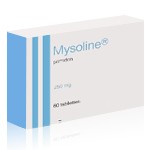Myoclonic Seizures: Understanding, Managing, and Treating a Complex Condition


Myoclonic seizures are a distinct type of seizure characterized by sudden, involuntary muscle jerks. These movements can be subtle or pronounced, affecting different parts of the body and sometimes causing unexpected movements that may disrupt a person's daily activities. Understanding myoclonic seizures, their symptoms, how they differ from similar conditions, and available treatment options is crucial for patients, caregivers, and medical professionals.
What is a Myoclonic Seizure?
A myoclonic seizure involves brief, shock-like jerks of a muscle or group of muscles. These jerks are caused by sudden contractions (positive myoclonus) or relaxations (negative myoclonus) of the muscles. The seizures typically occur on both sides of the body at the same time, particularly in the arms, neck, and sometimes the legs. Unlike other types of seizures, myoclonic seizures do not usually cause a loss of consciousness, although they can be very startling and disruptive.
Myoclonic seizures can be idiopathic, meaning they occur without an underlying condition, or symptomatic, linked to specific neurological disorders. They are frequently associated with epilepsy syndromes, such as Juvenile Myoclonic Epilepsy (JME) and Lennox-Gastaut Syndrome. Because myoclonic seizures can vary widely in their severity and frequency, they require careful diagnosis and individualized management plans.
Difference Between Myoclonic and Atonic Seizures
While both myoclonic and atonic seizures involve sudden changes in muscle tone, they are fundamentally different. In myoclonic seizures, the hallmark feature is a sudden, brief muscle jerk. In contrast, atonic seizures involve a sudden loss of muscle tone, causing the individual to collapse or drop objects unexpectedly. Atonic seizures, sometimes called "drop attacks," pose a significant risk of injury due to sudden falls.
Thus, while both types of seizures are sudden and can be unpredictable, myoclonic seizures are characterized by active, jerky movements, whereas atonic seizures are marked by a complete loss of muscle control. The underlying mechanisms also differ; myoclonic seizures result from sudden bursts of neuronal activity, whereas atonic seizures reflect an abrupt inhibition of brain activity that controls muscle tone.
Symptoms of Myoclonic Seizures
The primary symptom of a myoclonic seizure is a sudden, involuntary muscle jerk. These jerks are typically very quick, lasting only a fraction of a second, but can occur in clusters. Patients often describe them as feeling like a sudden shock or jolt. The jerks can vary from barely noticeable twitches to powerful movements that cause the person to drop objects, spill drinks, or even fall if standing.
Some individuals experience myoclonic seizures predominantly after waking up, a phenomenon especially common in Juvenile Myoclonic Epilepsy. Emotional stress, sleep deprivation, flashing lights, or certain medications can trigger the episodes. Importantly, people experiencing myoclonic seizures usually remain aware of their surroundings during the event, although the suddenness of the seizure can cause confusion or embarrassment.
The frequency and intensity of myoclonic seizures can vary dramatically among individuals. Some may have a few isolated jerks daily, while others experience hundreds in a single day, profoundly affecting their quality of life.
How to Calm Myoclonic Jerks
Managing and calming myoclonic jerks begins with proper diagnosis and treatment of the underlying condition. For individuals with epilepsy syndromes, antiepileptic medications are usually prescribed to control the seizures. However, there are additional strategies that can help minimize the frequency and severity of myoclonic jerks.
Firstly, identifying and avoiding known triggers is crucial. Sleep deprivation is a major precipitant of myoclonic seizures, so maintaining good sleep hygiene is essential. This includes adhering to a regular sleep schedule, creating a restful sleep environment, and avoiding caffeine or stimulating activities before bedtime. Stress management techniques, such as mindfulness meditation, breathing exercises, and yoga, can also reduce seizure activity in some patients.
Another important aspect is medication adherence. Skipping doses or improper use of prescribed antiepileptic drugs can lead to an increase in seizure activity. Therefore, patients are encouraged to follow their treatment plan meticulously and discuss any side effects or concerns with their healthcare provider.
In emergency situations where myoclonic jerks are frequent and disruptive, temporary medical interventions such as adjusting medication dosages or adding additional therapies may be necessary. However, self-medicating or altering prescribed regimens without medical supervision is strongly discouraged.
Are Myoclonic Seizures Dangerous?
In themselves, myoclonic seizures are usually not life-threatening. However, they can pose significant indirect dangers. Sudden, powerful jerks can cause accidents, such as dropping heavy objects, falling, or injuring oneself or others. In certain settings, such as while operating machinery, driving, or cooking, myoclonic seizures can become extremely hazardous.
Additionally, when myoclonic seizures occur as part of a more complex epilepsy syndrome, they may coexist with other seizure types that have more severe consequences, such as tonic-clonic seizures, which can involve loss of consciousness and convulsions.
Another concern is the emotional and psychological impact. Frequent, unpredictable seizures can lead to anxiety, depression, and social isolation. The stigma associated with epilepsy in general, and with seizures in particular, can significantly affect a person's self-esteem and quality of life.
In some rare cases, myoclonic seizures may progress to a life-threatening condition called status epilepticus, where seizures last longer than usual or occur in rapid succession without recovery in between. This is a medical emergency that requires immediate intervention.
The Role of Mysoline in the Treatment of Myoclonic Seizures
Mysoline, known generically as primidone, is an antiepileptic medication sometimes used in the management of myoclonic seizures, although it is more traditionally associated with the treatment of generalized and focal seizures. Mysoline acts primarily by decreasing abnormal electrical activity in the brain, thus stabilizing neuronal firing and reducing seizure frequency.
Primidone is metabolized into phenobarbital and phenylethylmalonamide (PEMA), both of which possess anticonvulsant properties. Its multi-faceted mechanism of action makes it effective for a variety of seizure types, although its use specifically for myoclonic seizures is often reserved for cases where first-line therapies, such as valproic acid or levetiracetam, are ineffective or poorly tolerated.
The use of Mysoline must be carefully managed due to its potential side effects, which can include sedation, dizziness, and ataxia. Patients beginning treatment with Mysoline are typically started on a low dose, which is gradually increased to minimize side effects. Blood levels of the drug are sometimes monitored to ensure therapeutic levels are maintained without reaching toxic concentrations.
Importantly, Mysoline is not universally effective for all individuals with myoclonic seizures, and some patients may require a combination of medications to achieve optimal control. Its role in treatment highlights the importance of personalized medicine in epilepsy management. Each patient's seizure pattern, overall health, coexisting conditions, and lifestyle must be considered when developing a treatment plan.
Furthermore, long-term use of Mysoline necessitates regular medical follow-up. Liver function tests, complete blood counts, and monitoring for signs of medication toxicity are essential parts of ongoing care. Patients must also be counseled on the risk of withdrawal seizures if the medication is stopped abruptly; therefore, any changes to the medication regimen must be supervised by a healthcare provider.
Conclusion
Myoclonic seizures, though often brief and not immediately life-threatening, can have significant impacts on an individual's safety, emotional wellbeing, and daily functioning. Recognizing the symptoms, understanding how they differ from other types of seizures, and implementing appropriate treatment strategies are critical for managing the condition effectively.
While medications like Mysoline can play an important role in treatment, a holistic approach that includes lifestyle management, trigger avoidance, and emotional support is equally essential. Advances in medical research continue to offer hope for better, more targeted therapies for those affected by myoclonic seizures, emphasizing the importance of ongoing dialogue between patients and healthcare providers.
Ultimately, with careful management and comprehensive care, individuals with myoclonic seizures can lead full, active, and fulfilling lives.
Medically Reviewed by Dr. Faride Ramos, MD
(Updated at Apr 30 / 2025)

